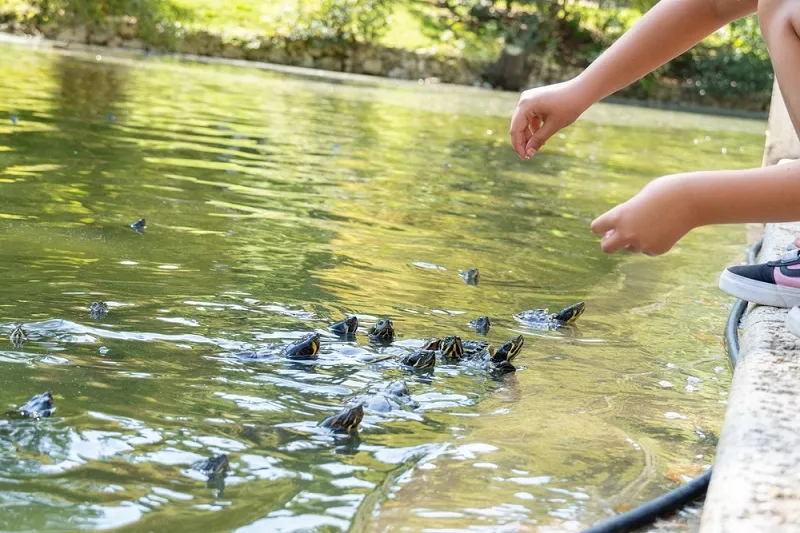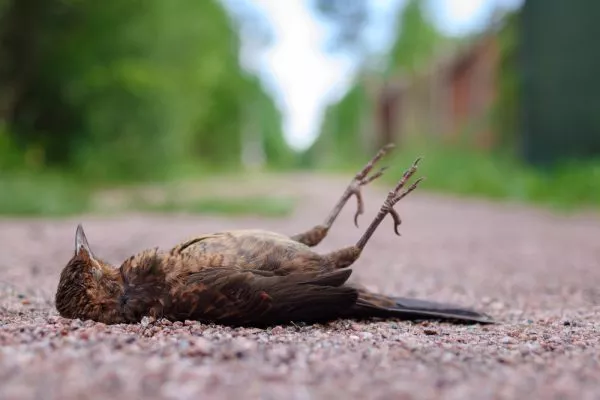Awe and astonishment are evoked when you see a magnificent bald eagle circling high above while you walk your dog. But if the eagle swoops down and grabs tiny Fido in its strong claws before taking off, that astonishment might rapidly turn to terror.
Your first thought could be to get out your weapon and take out the stealing bird from the skies in that moment of fright. But if an eagle captures your beloved dog, is it permissible for you to kill it?
For those with limited time, the following is a brief response to your inquiry: Federal law prohibits shooting bald eagles, with the exception of very rare situations involving self-defense. If you shot the eagle who stole your dog, you would probably be subject to heavy penalties and maybe even prison time.
The Federal Protection Status of the Bald Eagle
One of North America’s most recognizable and magnificent birds is the bald eagle. Many people who love the outdoors have a particular place in their hearts for the bald eagle, which is well-known for its majestic beauty and enormous wingspan.
But it’s crucial to realize that, in addition to being a symbol of pride for the country, the bald eagle is also protected as a species by federal law.
The Act to Protect Bald and Golden Eagles
A federal statute known as the Bald and Golden Eagle Protection Act (BGEPA) was passed in 1940 with the intention of maintaining and safeguarding these amazing birds. Without the appropriate permission, it is unlawful to “take, possess, sell, purchase, barter, offer to sell, purchase or barter, transport, export or import” bald eagles, their parts, feathers, nests, or eggs.
The importance of these birds in sustaining biodiversity and a healthy ecology is acknowledged by the BGEPA. It guarantees the stability of the bald eagle population and its ability to flourish in its native environment. There are harsh consequences for breaking this law, such as large fines and jail time.
Killing Eagles Are Only Allowed With Strict Exceptions
Although it is severely forbidden under the BGEPA to kill bald eagles, there are a few instances in which it is permitted for someone to own or kill an eagle. To make sure they don’t endanger the birds’ general population, these exclusions are well defined and tightly controlled.
The Native American religious exemption is one such exception, allowing Native American tribes to own eagle parts and feathers for use in religious rituals. This exception acknowledges the bald eagle’s spiritual and cultural importance to Native American tribes.
The depredation permit is another exemption, enabling landowners or renters to take the appropriate precautions against bald eagle predation of their livestock or property. But in order to get a depredation permit, you have to prove that you’ve tried and failed with non-lethal eagle deterrents.
It is essential to remember that federal authorities closely monitor these exceptions and only issue them in certain circumstances. These exclusions are meant to achieve a balance between preserving the species and dealing with certain situations when action may be required, not to promote the killing of bald eagles.
To get further knowledge on the provisions of the Bald and Golden Eagle Protection Act, go to the U.S. Fish and Wildlife Service’s official website at https://www.fws.gov/migratorybirds/baldeagle.htm.
Shooting an Eagle in Self-Defense: A Legal Defense
The idea of self-defense may be relevant in a circumstance when an eagle might endanger a person’s life or the life of their dog. Self-defense is a legal defense that permits someone to defend themselves or other people from immediate danger by using reasonable force, including lethal force.
Imminent Risk to Human Existence
Proving that there was an immediate threat to human life is essential for claiming self-defense when killing an eagle. This implies that there has to be a plausible suspicion that the eagle immediately threatened to kill the person or seriously hurt their dog.
It is crucial to remember that using lethal force is not always justified merely because an eagle is there or because someone is attempting to steal a dog. The danger has to be present and urgent. However, it could be acceptable to use reasonable force to defend oneself or one’s dog if the eagle is actively attacking or posing an urgent threat.
Report the incident and see a lawyer
It’s critical to report an incident to the proper authorities if someone finds oneself in a scenario where they feel shooting an eagle was required for self-defense. These could include regional law enforcement units, groups dedicated to protecting wildlife, or animal control services.
Seeking legal advice is also advised to make sure that all legal requirements and processes are adhered to. Guidance on the particular rules and laws that apply to shooting an eagle in self-defense may be obtained by speaking with an attorney who focuses in wildlife law or self-defense cases.
Keep in mind that every incident is different, and a detailed investigation will be conducted to ascertain whether or not the shooting of the eagle was lawful. In such cases, it is imperative to take appropriate action, report the event, and get expert legal counsel.
Alternative Strategies to Stop Eagle Attacks on Pets
Keep pets supervised or inside
Keeping pets inside or under constant supervision is one of the best strategies to stop eagle assaults on them. For little dogs, kittens, and other creatures that are more susceptible to eagle attacks, this is particularly crucial.
You completely remove the possibility of your pets coming into touch with eagles by keeping them inside. If you do allow your dogs outdoors, keep them confined to a fenced area and keep a careful eye on them.
Employ Repellent and Deterrent Techniques
Using repellent and deterrent techniques is an additional way to prevent eagle attacks on pets. Products made especially to deter eagles and other predatory birds are readily available on the market.
Eagles may be scared from your property by the loud sounds or flashing lights that these items often produce. Furthermore, several repellents have strong tastes or smells that eagles find repulsive, which deters them from pursuing your pets.
It’s crucial to remember that while these repellant and deterrent techniques have their uses, they are not infallible. Because they are clever animals, eagles may eventually get used to certain deterrents.
For this reason, it’s advised to switch up the goods and techniques used to preserve their efficacy.
Create Enclosures for Tiny Pets
If the incidence of eagle attacks on pets is high where you live, you may want to think about installing cages for your tiny animals. With these cages, your dogs can enjoy the outdoors in safety and security without worrying about eagle attacks.
To stop eagles from swooping down and snatching your pets, the cages should ideally feature a roof or netting. To further protect your dogs’ safety, make sure the enclosure is robust and escape-proof.
Although building cages for little pets might be more expensive, you can rest easy knowing that your pets are safe from any possible eagle attacks.
Recall that it’s important to learn about and comprehend the local rules and ordinances pertaining to the conservation of wildlife. Certain places could have extra rules or regulations in place to prevent eagle assaults on animals.
Seeking advice and resources from regional wildlife agencies or groups may be very beneficial.
Notifying Wildlife Authorities of Eagle Attacks and Cooperating with Them
Inform Federal and State Wildlife Agencies
It is imperative that you notify the relevant wildlife organizations of any eagle attacks that you or your dog may have experienced. This often entails getting in touch with both state and federal officials in the US.
Federal authorities are in charge of protecting endangered species and migratory birds, while state wildlife agencies are in charge of managing and preserving wildlife within their borders.
Make careful to provide as much information as you can when reporting an eagle attack, such as the incident’s date, time, and location. Wildlife authorities will be able to detect and monitor any trends or patterns in eagle behavior with the use of this.
It is also possible to indicate if any injuries were received and how much damage was done.
Give Specifics About the Attack
Giving precise and thorough details is crucial when speaking with wildlife authorities about the assault. Give a detailed account of the events that preceded the assault, including whether your dog was leashed and if you were in a designated wildlife area.
This will assist authorities in evaluating the circumstances and figuring out if any rules or laws were broken.
If you were able to identify the eagle that was attacked, please provide any physical characteristics that set it apart. Wildlife authorities may use this information to identify and evaluate the behavior of the particular eagle.
Talk About Solutions to Stop Attacks in the Future
Wildlife authorities may provide advice on how to avoid such instances in the future after receiving reports of the assault. They could advise taking precautions like walking your dog on a leash, staying away from locations where eagles are known to congregate, or setting up visual or auditory barriers as deterrents.
In order to protect your dog and the eagles, it is crucial that you heed the advice given by wildlife experts. Recall that federal laws protect eagles, and it is forbidden to harm them without the right authority.
Visit the websites of your state’s wildlife agency and the U.S. Fish and Wildlife Service for further information on reporting eagle attacks and collaborating with wildlife authorities.
Grieving the Departure of a Treasured Pet
It may be quite devastating to lose a cherished pet. Our families value the unconditional love and companionship that pets provide. It’s normal to weep and lament their loss when they die away.
One of the most crucial aspects of the healing process is addressing the emotions that accompany pet loss.
Looking for Psychological Assistance
Everyone experiences grief in a different way, and mourning the death of a pet is a unique journey. Seeking emotional support during this trying period is crucial. Speak with loved ones who are aware of the connection you have with your pet.
They may provide consoling words, a sympathetic ear, and supportive empathy.
Joining online forums or support groups dedicated to pet loss is another option to think about. These groups provide a secure environment for interacting with others who are experiencing comparable things. It may be quite therapeutic to share your experiences and sentiments with like-minded folks.
Honoring Your Pet
A lot of pet owners find comfort in honoring their cherished animals. Making a memorial for your pet may provide closure and help preserve their memory. There are many methods to pay tribute to your pet’s life:
planting flowers or a tree in their honor
making a scrapbook or picture album of special occasions
Composing an emotional letter or poem
donating in their name to a nearby animal shelter or rescue group
These memorial services may provide you solace and function as a permanent homage to your animal companion.
Thinking About Getting a New Dog
Though it can seem unfeasible to think of getting a new dog, it can make your life happier and more therapeutic. Although a new friend cannot bring back the love and companionship of the one you lost, they may provide it in their own special manner.
Give yourself time to mourn and remember your former pet before getting a new one. Being emotionally prepared for the responsibilities of a new pet is crucial. When choosing a choice, take into account aspects like your lifestyle, availability of time, and capacity to take care of a dog.
When the time is right, think about adopting a dog from a nearby rescue or animal shelter. Your heart will mend from the pleasure and love an animal brings, in addition to you giving them a caring home.
Final Thoughts
It is devastating to lose a cherished dog to an eagle assault. Even while your natural desire to defend your pet would push you to take drastic actions, like killing the eagle, doing so would be illegal if you didn’t do it in an emergency.
It would be wiser to take preventative steps to prevent such assaults, report the incidence to wildlife authorities, and make use of emotional support networks. Both humans and eagles may live in harmony together given enough time, knowledge, and prudence.





